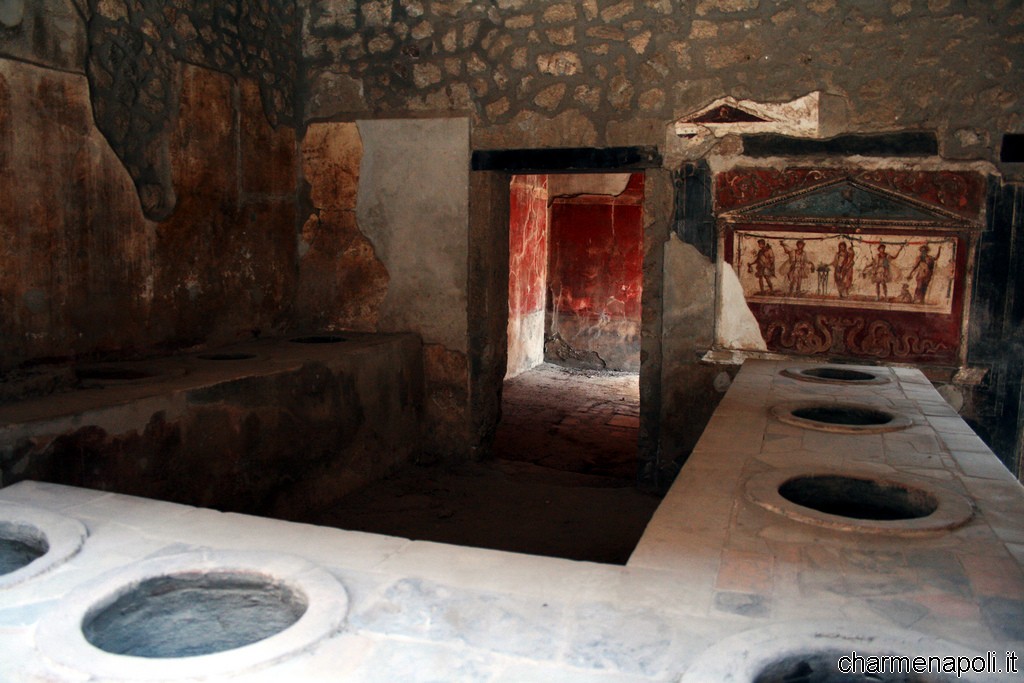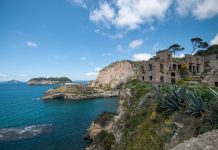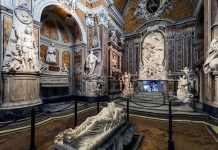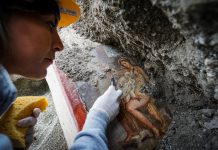The furnishings of two Domus Pompeiane were rebuilt as they were before the eruption of AD 79 under the project of “widespread museum display” of the archaeological site. In “Fullonica of Stephanus”, an ancient laundry room located along Via Abundance, it has been rearranged the kitchen on the model adopted a century ago by the then superintendent Vittorio Spinazzola, documented by a photo archive that dates back to 1916.
In the “great Gym” they are permanently exhibited organic finds – already included in the exhibition “Myth and Nature” just ended – supplemented by an additional section of naturalistic exhibits from Moregine. The staging of “Fullonica of Stephanus” is part of the development project of Pompeii site, designed as a “museum”, which provides spaces located in different parts of the ancient city dedicated to specific themes. Examples are the Villa Imperiale, which were rearranged domestic environments of the triclinium and the bedroom, and the Temple of Isis where they retraced the Egyptian cults.
The layout of the early twentieth century “Fullonica” responded to an educational policy, very modern for its time, the revival of spaces to put the visitors into contact with the daily life of the ancient city. You could understand the functioning and organization of the kitchen I sec. A.D. with the iron grid for meat still hanging on the wall and the pottery necessary for the preparation and cooking of food placed on the counter. The everyday objects now on display all come from the deposit of Casa Bacchus and were identified through a rereading of “Librette Shrink”, period registers recording the inventory number of the parts, refer where they were found and provide brief descriptions .
The “Fullonica of Stephanus” was equipped with large tanks for rinsing in masonry, fed by a continuous flow of water and stone basins for dyeing, washing and stain removal, which was done by using special types of clay or urine . Terraces on the upper floor and they were used for drying fabrics treatments. A press (the “torcular”) served to stretch the fabric and make it shiny. The finds place in the two Domus are protected by a tempered glass structure to be 13,52 mm, with particular safety precautions in the event of accidental breakage, and with an exhaust system of weights to the ground. The structure is made in compliance with the archaeological context and does not seal the environment, allowing the exchange of air and preventing the formation of harmful micro-climates for the conservation of archaeological finds.

 Italiano
Italiano














